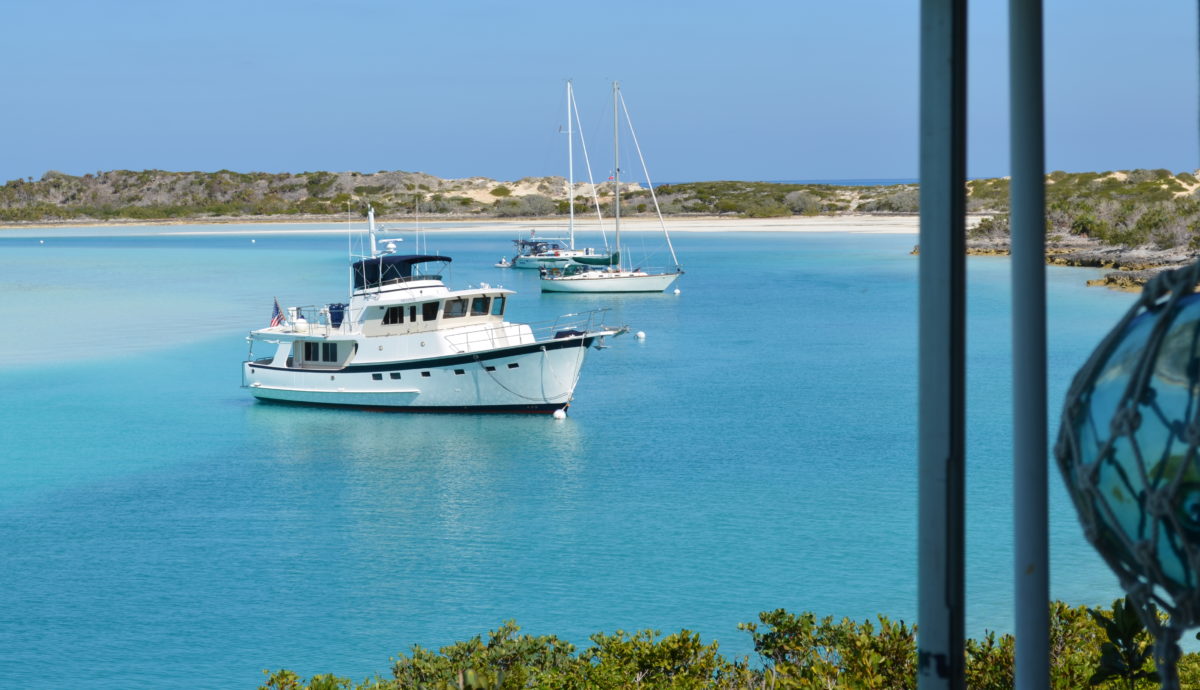Exuma Cays Land and Sea Park
A beautiful place. Well protected from development and fishing by the park laws and boundaries. And great for cruising in a natural environment. Plenty of places to anchor and excellent moorings. We were here a few years back while cruising on Chasseur and looked forward to our return on Privateer. Coming up from the south, our first stop was the Cambridge Cay mooring field. The entrance from the south is a bit skinny, the charts showing some 5′ spots, and we draw almost 5. There are enough Active Captain descriptions that attest to at least 5′ at low, assuming you stay in the so-called channel.
For those of you hesitant to lock on to the “magenta line” while in the ICW, this is different. The Explorer Chart route needs to be followed exactly. Especially if you draw 5′ and are coming in at low tide. Unlike the ICW, you can see the bottom clearly. Way too clearly. And even if you are very experienced at reading depth in the Bahamas, I defy you to differentiate between 5′ (enough) and 4.5′ (not enough). All I can do to add to the knowledge base, is that if you follow the Explorer route you will have at least 5′ at low. But not much more. And the channel gets down to about 30′ wide at one point. But by the time you get this far, the channel is easy to read.
Once in, the area is mostly covered with mooring balls, but room to anchor if you choose. We took a ball. A quick note on the balls in the park. Very well maintained, very strong (more on that later). Most rated for 60′, some for 100′. That said, some get chewed up by the props of the incompetents, so we always dive on them.
Cambridge Cay anchorage is a spectacularly beautiful spot. Looking north or south you can see up and down the island chain. Looking east, over a large coral shoal, is the bank forever. for one of our three days here we were the only boat in the anchorage. If you are looking for quiet, this is the place to go. And not too far north is the snorkeling spot called the sea aquarium. Dinghy moorings and lots of fish. Not to be missed.























You must be logged in to post a comment.